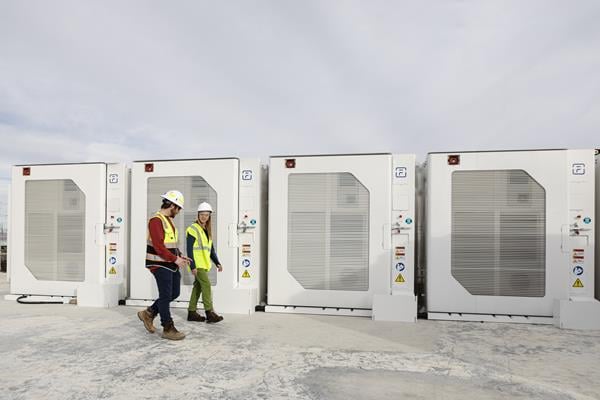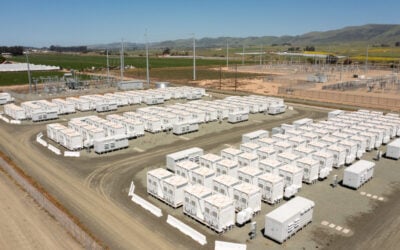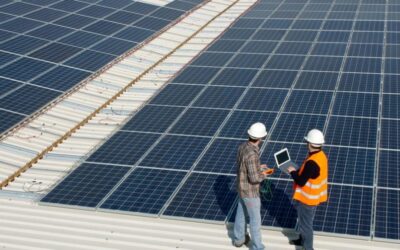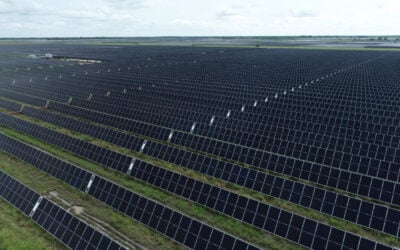
Fluence saw a 14% fall in revenue in the third quarter of its financial year, driven largely by ongoing logistics issues the company said are now easing.
The global energy storage system integrator saw revenues of US$239 million in the three months to June 30, 2022, the third quarter of its 2022 fiscal year (FY2022), down 14% year-on-year. Its Q2 FY2022 revenue had been US$343 million, as reported by Energy-Storage.news in May.
Enjoy 12 months of exclusive analysis
- Regular insight and analysis of the industry’s biggest developments
- In-depth interviews with the industry’s leading figures
- Annual digital subscription to the PV Tech Power journal
- Discounts on Solar Media’s portfolio of events, in-person and virtual
The company said the most recent quarter’s revenue performance was in line with expectations given the recent COVID-19 related lockdowns in China.
Fluence managed to improve gross margins by -4% to -2% while increasing liquidity by US$39 million to end the period with US$762 million in cash. It is reaffirming full-year revenue guidance of US$1.1 billion, the lower end of a forecasted US$1.1 billion to US$1.3 billion. Its backlog of orders stands at US$2.1 billion, while it anticipates Q4 revenues of around US$345 million.
CEO Manuel Perez Dubuc made his final appearance in the company’s earnings call to explain results as he prepares to make way for incoming new chief exec Julian Nebreda.
Dubuc said Fluence is making “strong progress mitigating operational headwinds”. Its improved gross margin position was achieved despite those “expected challenges,” which included delays and increased shipping costs. In some instances, suppliers had invoked force majeure clauses and the integrator was compelled to also do so with its customers.
“I’m pleased to report we are seeing shipping rates plateau and in some cases, regress,” the CEO said, adding that good relationships with multiple shipping partners meant that Fluence is able to negotiate better terms and more optionality.
That was a welcome reprieve from the more challenging conditions faced over the previous six months, according to Dubuc. Meanwhile, the company is seeing increased battery production volumes from its suppliers.
Assuming those dynamics continue, Fluence expects force majeure issues to be resolved by Q1 FY2023 and battery suppliers have been locked in for the 2022-2023 timeframe, as the company negotiates deals to do the same for 2024-2025.
Other impacts from COVID19, such as site closures and other onsite disruptions have been “effectively remediated,” Dubuc said. Meanwhile, certain unanticipated costs had been incurred with installation and commissioning related to “balance of plant and transformer challenges on a few specific projects,” which the company is dedicating time and resources to remediating, he said.
Its order intake during the quarter fell 9% year-on-year to 311MW while energy storage services orders plummeted by 90% to 81MW. Digital contracts fared better, growing 40% to 804MW. CFO Dennis Fehr said however that the lower order intake corresponds to Q1 and Q2 having been particularly strong, while Q3 was “decent,” or “average”, as he described it.
Indeed, even with price increases applied during FY2022, the company’s order intake of 1,493MW for the first nine months of the fiscal year already exceeds a total of 1,311MW of energy storage orders logged for the whole of FY2021, Fehr pointed out.
The company’s share price opened up at US$17.26 on the morning of Tuesday, 17 August, the day after the results were released, but slid 7% over the morning to a low of US$16.57 before rebounding to US$17.56 by close of trading on 18 August.
Key takeaways from Fluence earnings call
Inflation Reduction Act
Fluence expects “significant upside” from the new Inflation Reduction Act legislation in the US. Foremost is the 30% investment tax credit (ITC) incentive for standalone energy storage which will drive customer demand. In addition, Fluence has already shifted its contract manufacturing into US locations and is finalising its own Utah production facility, which CFO Fehr said could be ramped up to 14GWh in a matter of years.
With the Inflation Reduction Act (IRA) also including incentives for domestic manufacturing of batteries and other equipment used in low-emissions energy projects, Fluence leadership said they and their partners would be positioned well to benefit. However, further, more detailed examination of the Act’s provisions will be needed to quantify that upside.
According to remarks from an interview with Fluence senior director of manufacturing Peter Silveira reported by Energy-Storage.news yesterday, the company believes one immediate consequence will be the growth of cell manufacturing capacity within the US.
Raw Materials Index pricing
Fluence has moved to include Raw Material Index (RMI) pricing on its contracts, as have others in the industry. This has meant that some legacy contracts are being renegotiated and repriced based on those changing prices, on which Dubuc said progress is being made. Looking ahead, RMI pricing has become an accepted fact of the industry today for new contracts, the CEO claimed.
Three priorities for new Fluence CEO
New CEO Julian Nebreda is not yet officially part of the management team but offered up three key priorities for his leadership to focus on.
The first is to transform a set of challenging supply chain circumstances into a competitive advantage, the second to create and communicate a clear product roadmap strategy and the third is to focus resources and create the structure to enable further growth of Fluence Digital, the arm of the company which deploys software to optimise and manage both energy storage and renewable energy assets.
Diversification of suppliers and technologies
Finalising assembly in the US will also help to avoid supply chain issues encountered in other locations, the company claimed.
Among those issues is that “substandard” components had been received from certain suppliers, and chief product officer Rebecca Boll said that a new facility in Pennsylvania, US, will be used to test out equipment from a range of sources, particularly batteries and inverters.
Boll said overall diversification of supplier base continues, with 30% of battery supply to come from outside China in 2023, from European and Korean manufacturers primarily.
Lithium battery price rises, driven by raw materials costs, also provide an impetus to diversify the company’s technology base and Dubuc referred to Fluence’s partnership with solid state battery company QuantumScape offering a potential lower cost pathway, while the company is also looking closely at sodium-ion chemistry batteries.
India’s potential
As has been widely reported by this site and others, India’s energy storage market is growing and is expected to pick up pace significantly. Fluence’s joint venture (JV) with listed Indian renewable energy independent power producer (IPP) ReNew Power will give it a “first mover advantage” there, the CEO said, while the company has also opened up a global technology centre in the country. Fluence expects to see total market demand for stationary storage reach 27GW by 2030 in India.
Energy storage as transmission
Another area where Fluence is claiming first mover advantage is in energy storage-as-transmission. The future driver of industry bottlenecks won’t be battery supply, it will be transmission, Dubuc said. It’s a relatively untapped area of growth along with data centres, and transmission segment projects could offer higher margins relative to other applications.
The CEO cited examples of projects in Chile and in Europe where Fluence is positioning itself as one of the few, if not the only, energy storage provider offering batteries as a “transmission booster”, easing congestion on the grid and freeing up network operators from making costly investments in new wires, poles and other infrastructure.
Additional reporting by Cameron Murray.
Earnings call transcript by Seeking Alpha.






